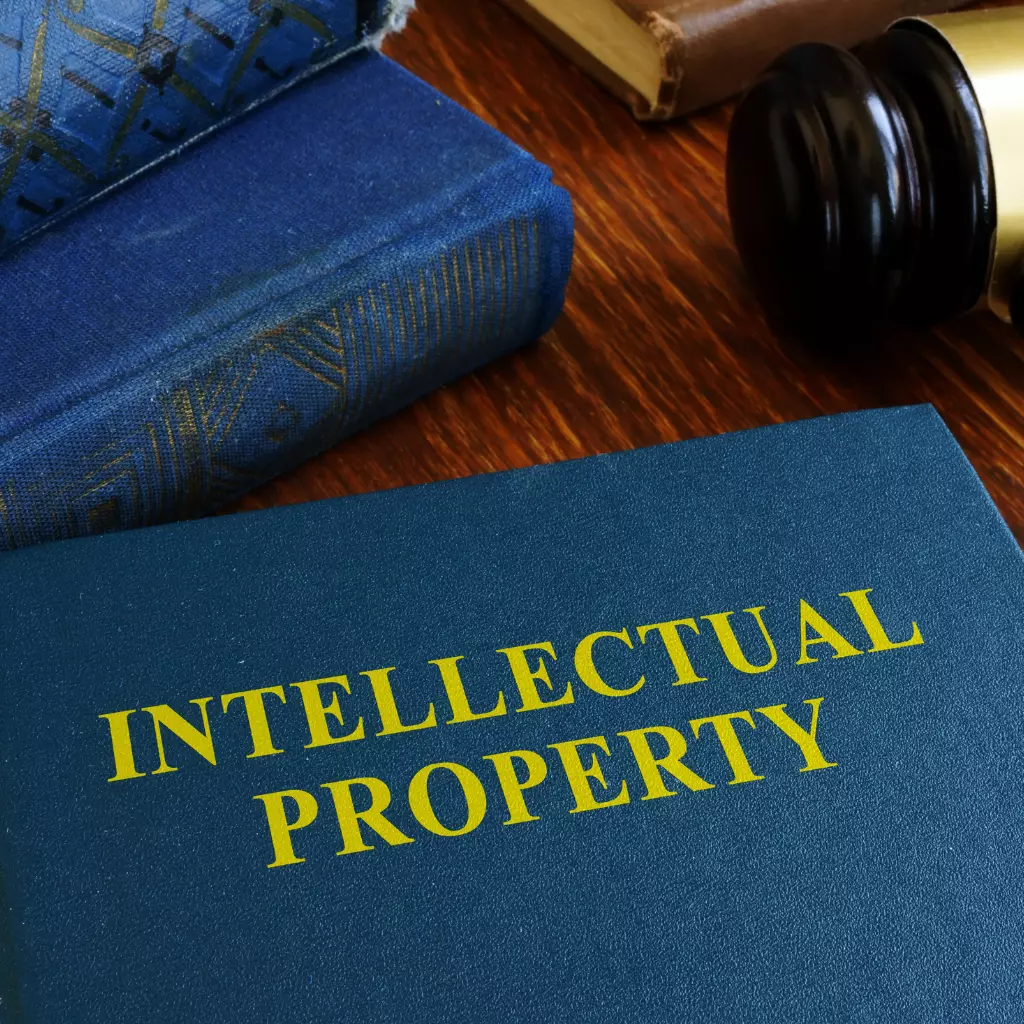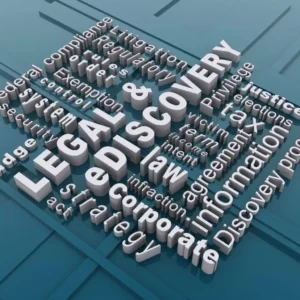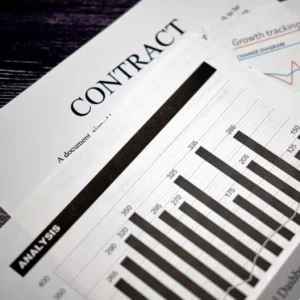
From Patents to Trademarks
AI-Driven IP (Intellectual Property) Management:
In an age where innovation sits at the nexus of success, safeguarding Intellectual Property (IP) has never been more paramount. But as IP’s significance rises, so does its complexity.
Enter Artificial Intelligence – the game-changer, steering IP management into a new dawn. AI’s touch is omnipresent, from making patent research a breeze to keeping an unfaltering watch on trademarks.
This article unravels the profound symbiosis between AI and IP, showcasing how this duo is crafting the future of Intellectual Property management.
AI’s transformative influence is undeniable, whether it’s the meticulous crafting of patent applications or the adept monitoring of IP assets. Dive in to witness the innovation-led renaissance of AI-driven IP Management.
Table of Contents
What is Intellectual Property?
Intellectual Property (IP) is a term often bandied about in innovation, yet not everyone fully grasps its breadth and significance. At its core, IP refers to creations of the mind – inventions, literary works, symbols, names, or images used in commerce.
AI-driven Intellectual Property management is built on this foundation. IP laws grant inventors, authors, or creators specific rights, protecting against unauthorized use.
In today’s digital age, the role of IP is more crucial than ever. With AI in patent search and analysis, the discovery phase, it is easier to navigate vast repositories.
Machine learning for IP infringement detection aids in monitoring potential breaches, while natural language processing in patent applications ensures streamlined submissions.
Then, we have AI-driven IP portfolio management tools and predictive analytics in patent value assessment, offering insights like never before.
Now, imagine a world where your brand’s trademark is under constant vigil through AI tools for trademark monitoring. Doesn’t that offer a level of security previously unheard of? With all these advancements, one can’t help but wonder: how is AI shaping the foundation of IP rights enforcement and management?
The New Age of Patent Research
Patent research was once a tedious, time-consuming affair. Enter the new era, marked by AI-driven Intellectual Property management. Now, navigating the complex maze of patent repositories feels less like a daunting chore and more like a streamlined journey. With AI in patent search and analysis, professionals can rapidly zero in on relevant content, quickly making comparisons and understanding nuances.
Notably, natural language processing in patent applications plays a pivotal role. It deciphers intricate linguistic patterns, allowing for more innovative, faster searches. But that’s not all. AI tools for trademark monitoring and machine learning for IP infringement detection have turned the tide, ensuring that potential breaches are identified long before they escalate.
In this age, where innovation is paramount, predictive analytics in patent value assessment offers inventors insights into the potential value of their creations. It’s a game-changer, providing a more straightforward pathway for inventors and investors.
With all these tools at our fingertips, the landscape of patent research is evolving at a breathtaking pace. How will this transformation shape how inventors approach the patenting process in the future?
Detecting IP Breaches Proactively
In the fast-paced digital realm, safeguarding intellectual assets is not just about reactive measures anymore; it’s about staying one step ahead. The world of AI-driven Intellectual Property management is pioneering this proactive approach. With machine learning for IP infringement detection, the system doesn’t just wait for breaches to happen; it anticipates them.
Consider AI tools for trademark monitoring. These aren’t just passive observers. They’re active watchdogs, scouring the web to spot potential brand identity misuse. Coupled with AI-driven copyright violation checks, creators and brands can sleep a bit easier, knowing their assets are under vigilant digital surveillance.
Further bolstering this proactive stance is using natural language processing in patent applications. By understanding the essence of patent descriptions, it becomes feasible to spot similarities or potential infringements even before they pose a direct threat. Similarly, AI in patent search and analysis can flag potential patent overlaps, preemptively addressing possible conflicts.
Such advancements beg the question: In a world increasingly driven by AI tools, how will the traditional landscape of IP protection evolve to meet these heightened standards of proactive defence?
Managing IP Assets Efficiently
Intellectual Property isn’t just about having patents, trademarks, or copyrights; it’s about managing these assets to their full potential. Welcome to the modern age of AI-driven Intellectual Property management, where technology redefines IP management efficiency.
One of the pillars of this transformation is AI-driven IP portfolio management. Instead of manually sifting through many documents, AI swiftly categorizes, organizes, and predicts future IP values. Incorporating predictive analytics in patent value assessment ensures that IP assets aren’t just stored but evaluated for their prospective market worth.
Moreover, the complexities of IP documentation are simplified by natural language processing in patent applications. By understanding the essence of each application, AI can sort, filter, and present data in an easily digestible manner.
But the AI umbrella in IP continues further. With AI tools for trademark monitoring, brands can maintain their reputation by keeping unauthorized usage in check. And, with AI in patent search and analysis, potential overlaps can be identified promptly, ensuring an organization’s IP remains unique and uncontested.
With AI streamlining every facet of IP management, one wonders: How will this newfound efficiency influence how businesses strategize their intellectual assets in the coming years?
Gauging the Potential Value of Patents
Determining the potential worth of a patent is akin to predicting the future. It requires analyzing market trends, technological advancements, and competitor landscapes. This daunting task is getting a tech-driven makeover thanks to AI-driven Intellectual Property management.
At the forefront of this transformation is predictive analytics in patent value assessment. This AI-based tool doesn’t just rely on current data; it projects market dynamics, enabling businesses to foresee the potential return on their patents. The utility of AI in patent search and analysis further complements this. By understanding the novelty and relevance of a patent in its domain, one can more accurately estimate its future value.
The synergy of machine learning for IP infringement detection and AI-driven IP portfolio management further refines the value assessment. With AI keeping a vigilant eye on any potential infringement, the exclusivity of a patent is better maintained, ensuring its value doesn’t get diluted. With AI’s holistic approach to managing the IP portfolio, businesses can prioritize patents based on their projected worth.
With such tools democratizing the evaluation process, how might businesses reshape their IP strategies, knowing they can more confidently predict the value trajectory of their intellectual assets?
Keeping a Vigilant Eye on Trademarks
Trademarks, symbols of a brand’s identity, need unwavering protection in today’s digital expanse. Enter AI-driven Intellectual Property management, transforming the watchtower for these valuable brand markers.
Central to this shift is the deployment of AI tools for trademark monitoring. These tools scour the vast digital domain, detecting unauthorized use or eerily similar symbols that might dilute a brand’s identity. With machine learning, these tools notice IP infringement and refine search algorithms with each discovery.
The might of natural language processing in patent applications also extends its reach to trademarks. By comprehending the nuances in brand descriptions and claims, AI can highlight potential conflicts before they emerge. This preemptive approach, fortified by AI in patent search and analysis, ensures that every angle of possible infringement is covered.
While AI-driven copyright violation checks predominantly focus on content, their underlying mechanisms also aid in trademark protection, especially when trademarks are integrated within copyrighted content.
Amidst this advanced surveillance, one can’t help but ponder: As AI continues to sharpen its monitoring tools, how will brands redefine their strategies further to solidify their trademark’s stronghold in the market?
Streamlining Patent Application Processes
The path to patenting an invention, historically convoluted and lengthy, is undergoing a seismic shift thanks to AI-driven Intellectual Property management. The challenges of yesteryears are now being addressed with precision and speed like never before.
Central to this change is natural language processing in patent applications. AI ensures clarity, comprehensiveness, and compliance by profoundly understanding the linguistic intricacies of patent descriptions. This drastically reduces back-and-forths with patent offices, saving inventors time and resources.
Moreover, AI in patent search and analysis is a game-changer. Before applying, inventors can now get an AI-powered glimpse into the patent landscape, spotting potential overlaps or similarities with existing patents. This preemptive approach ensures higher approval rates and fewer complications down the line.
The integration of AI tools for trademark monitoring and machine learning for IP infringement detection, even at the application stage, reinforces this streamlined process. By simultaneously keeping an eye on potential trademark and patent breaches, AI ensures that the new patent doesn’t inadvertently infringe upon existing rights.
With such advancements, one would wonder: As AI continues to simplify patent applications, will we see a surge in innovations to the patent office? And how will this shape the future of invention?
Enhancing IP Litigation Strategies with AI
Litigation, especially in the intricate world of Intellectual Property, is often a maze of complexity. But AI-driven Intellectual Property management shines a transformative light on how legal battles are strategized and executed.
Firstly, the power of AI in patent search and analysis proves invaluable in litigation. By quickly scanning vast patent repositories, AI tools can identify precedents, similarities, and patterns that human lawyers might overlook. This provides a robust foundation for building a litigation strategy.
Moreover, machine learning for IP infringement detection is a strong ally in the courtroom. By presenting patterns of repeated infringement, AI aids legal teams in showcasing intent or negligence on the part of the infringing party.
Then, there’s the potential of natural language processing in patent applications. This AI capability can critically analyze patent claims, descriptions, and counterclaims, drawing connections and highlighting inconsistencies that can be pivotal in litigation scenarios.
AI tools for trademark monitoring and AI-driven copyright violation checks further fortify the litigation arsenal. They provide real-time evidence of violations, ensuring legal arguments are backed by timely and indisputable data.
Given these leaps in litigation support, a pressing question emerges: As AI becomes an indispensable courtroom companion, how will it redefine the dynamics of IP litigation in the years ahead?
Safeguarding Content in the Digital World
With its endless content stream, the digital realm presents both opportunities and challenges for creators. At the intersection of these lies the imperative to safeguard one’s creations. Fortunately, AI-driven Intellectual Property management offers tools that revolutionize content protection in the digital age.
Central to this are AI-driven copyright violation checks. These tools constantly scour the vast online expanse, pinpointing unauthorized usage or reproductions of copyrighted content. By doing so, they ensure the original creator’s rights are undiluted.
Machine learning for IP infringement detection takes this a step further. It learns from every detected violation, refining its search parameters and becoming more adept at spotting even subtle breaches. This evolving intelligence is a testament to AI’s potential in dynamic digital landscapes.
The prowess of natural language processing in patent applications has also found utility in content protection. By discerning intricate nuances in textual content, AI can identify plagiarized or slightly altered versions of original works.
Simultaneously, AI tools for trademark monitoring ensure that branded content, logos, and taglines aren’t misused or misrepresented online.
With these formidable defences in place, it sparks curiosity: As AI’s protective net becomes denser and more competent, how will content creators evolve their digital strategies, knowing their creations have a robust guardian?
Simplifying IP Transactions and Licensing
Licensing and transacting Intellectual Property has always been a dance of intricate legalities and negotiations. However, with AI-driven Intellectual Property management, this dance is becoming more streamlined and precise.
Take AI tools for IP licensing and monetization as a prime example. These platforms leverage algorithms to match patent holders with potential licensees based on industry, technology, and other critical parameters. It’s matchmaking for the IP realm, driven by data.
The brilliance of natural language processing in patent applications is another boon. It allows for automated yet thorough analysis of licensing agreements, ensuring clarity and mitigating risks of future disputes. Every term and every clause is scrutinized with unparalleled precision.
Further enhancing transaction efficiency is AI in patent search and analysis tools. They provide crucial insights into a patient’s landscape, helping stakeholders make informed decisions about the value and viability of a licensing deal.
Lastly, with the aid of machine learning for IP infringement detection, licensing agreements can be fortified with proactive breach detection, making compliance monitoring seamless.
Given these transformative capabilities, one wonders: As AI continues to simplify the intricacies of IP transactions, will we see an unprecedented boom in global IP trade and collaborations? What new frontiers might this unlock for inventors and businesses?
The Evolving Landscape of AI-Powered IP
The fusion of Intellectual Property and Artificial Intelligence is more than just a blend of two fields; it’s the dawn of a transformative era. The AI-driven Intellectual Property management landscape is evolving, and its ripple effects are palpable across industries.
First off, the prowess of AI in patent search and analysis is altering the foundation of IP research. No longer limited by human constraints, patent searches now span vast databases, returning results with unmatched precision and speed.
In parallel, machine learning for IP infringement detection sets a new gold standard in proactive IP protection. As these systems learn and adapt, they’re becoming increasingly adept at spotting infringements, often before they escalate into more significant issues.
Furthermore, AI-driven IP portfolio management tools enable firms to strategize and manage their IP assets with predictive analytics. Such foresight was previously unattainable, bringing an era of informed IP decision-making.
And not to be overshadowed, using natural language processing in patent applications is revolutionizing the patent drafting process, ensuring clarity, and reducing ambiguities.
Amidst these advancements, a pertinent query lingers: With AI driving the IP ship into uncharted waters, how will traditional IP practices evolve? And, crucially, are we on the brink of witnessing the most innovative phase in Intellectual Property?
Conclusion:
Innovating the IP Realm: AI’s Transformative Touch
As we’ve delved deep into the interplay between AI-driven Intellectual Property management and the broader IP world, one thing becomes clear: Artificial Intelligence is the catalyst reshaping IP’s core.
The revolution started with AI in patent search and analysis, bringing forth efficiency and precision that was once just a pipe dream. Patent research, long perceived as daunting, is now expedited, with AI algorithms mining databases to glean critical insights.
Machine learning for IP infringement detection has equally shifted the paradigms of IP protection. With their dynamic learning capabilities, these systems are ever-vigilant, often preempting breaches before they burgeon into tangible threats. With the introduction of AI-powered copyright violation checks, the digital world has finally found a vigilant protector, relentlessly safeguarding the rights of content creators and ensuring that their work remains free from plagiarism.
Natural language processing in patent applications is another game-changer. Traditionally a labyrinth of complexities, patent drafting now has AI as its guide, ensuring clarity and minimizing ambiguities.
Simultaneously, AI-driven IP portfolio management and AI tools for IP licensing and monetization have transformed the business side of IP. Strategic decision-making, portfolio optimization, and lucrative collaborations – have all been made more accessible, transparent, and efficient.
In answering the lingering queries, Traditional IP practices are undoubtedly evolving. As AI’s protective and predictive prowess continues to burgeon, we’re not just on the brink but are actively partaking in the most innovative phase of Intellectual Property. The fusion of AI and IP is more than a mere convergence; it’s a renaissance, promising a future where innovation thrives, protected and propelled by technology.
Related Articles
- AI in Pro Bono Case Selection: Maximizing Impact
- AI in Alternative Dispute Resolutions: The New Mediator
- AI in Courtroom Support: Revolutionizing Evidence Compilation
- AI-Driven IP Management: From Patents to Trademarks
- AI-Driven Document Categorization: Legal Filing Transformed
- AI in Compliance Monitoring: Legal Standards and Predictive Oversight
- AI-Driven Legal Chatbots: Future of Attorney-Client Interactions
- AI-Driven E-Discovery Platforms: Enhanced Efficiency and Precision
- AI-driven Legal Analytics: Transforming Decision-making and Litigation Strategies
- AI-Driven Legal Research: How Technology is Reshaping the Future of Law
- AI for Contract Analysis: Streamlining Processes and Predicting Success
- Other Articles on AI Usage in Legal
- Other Articles on AI usage in different industries
























